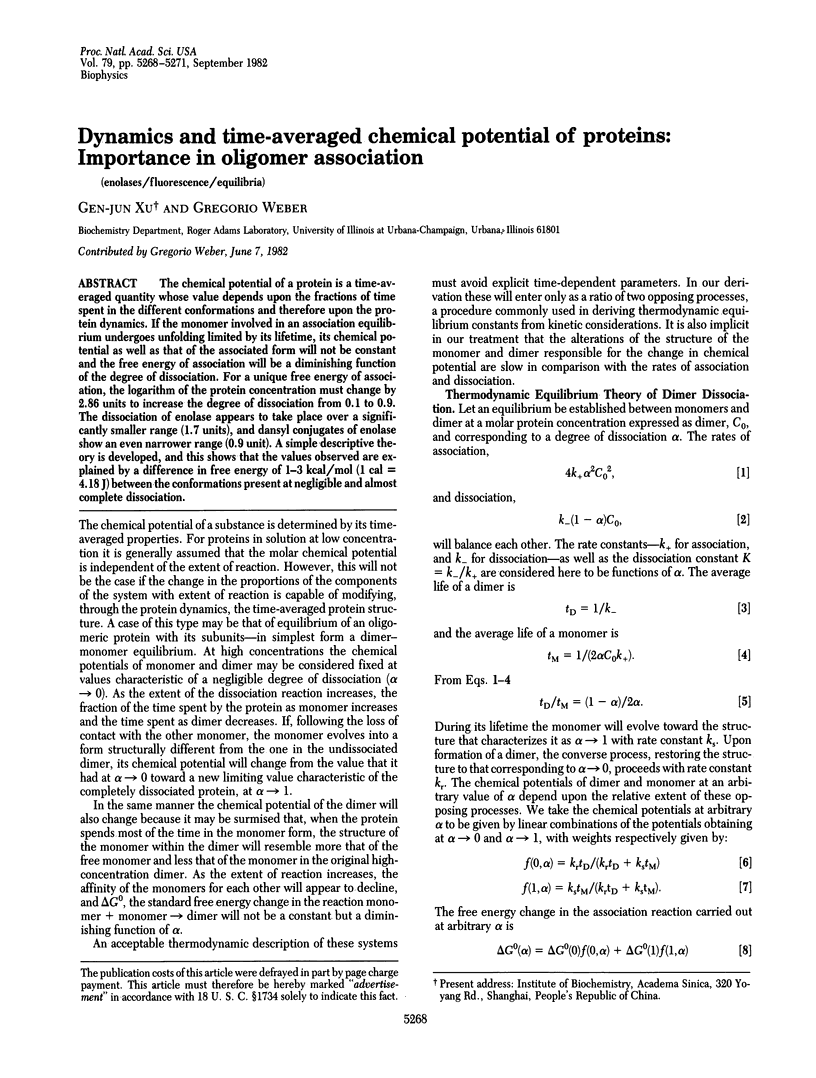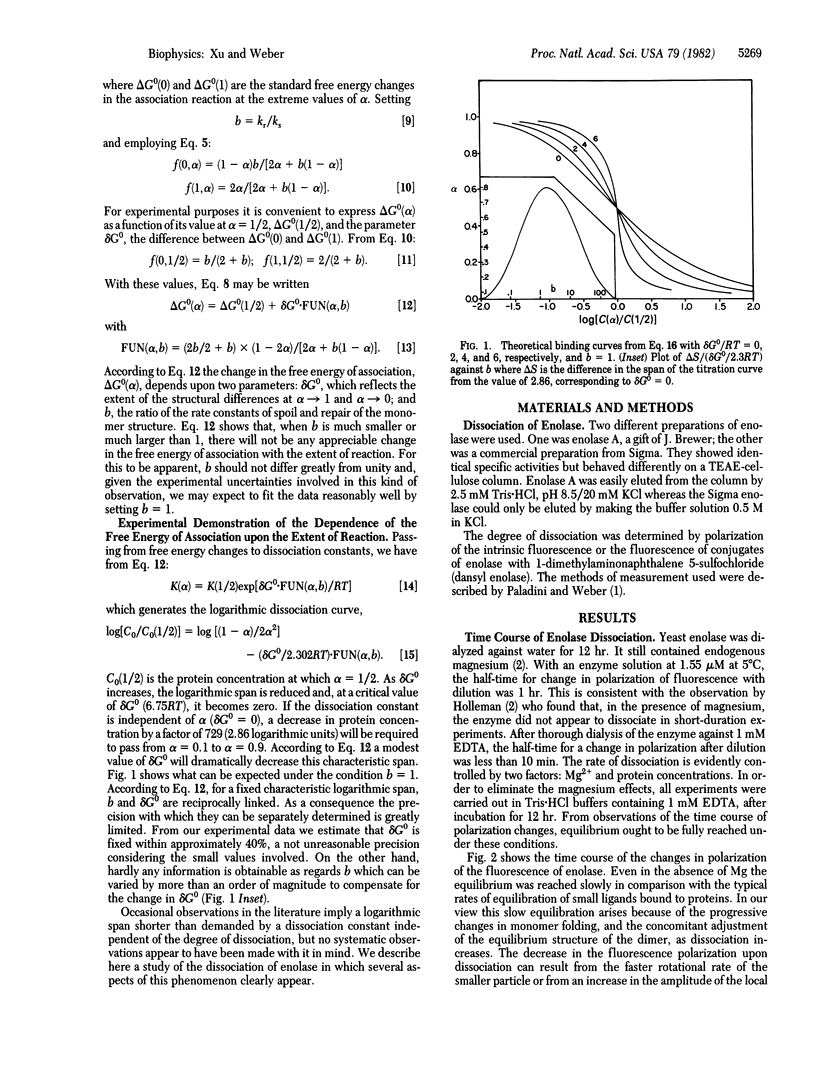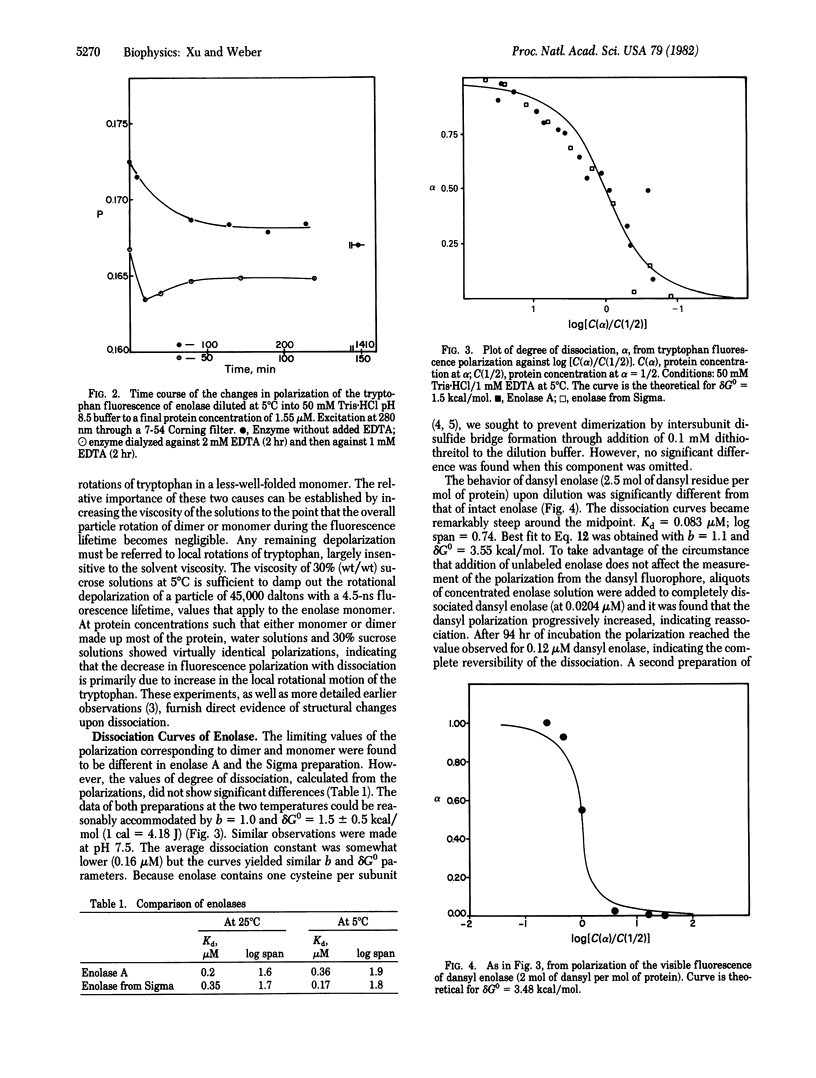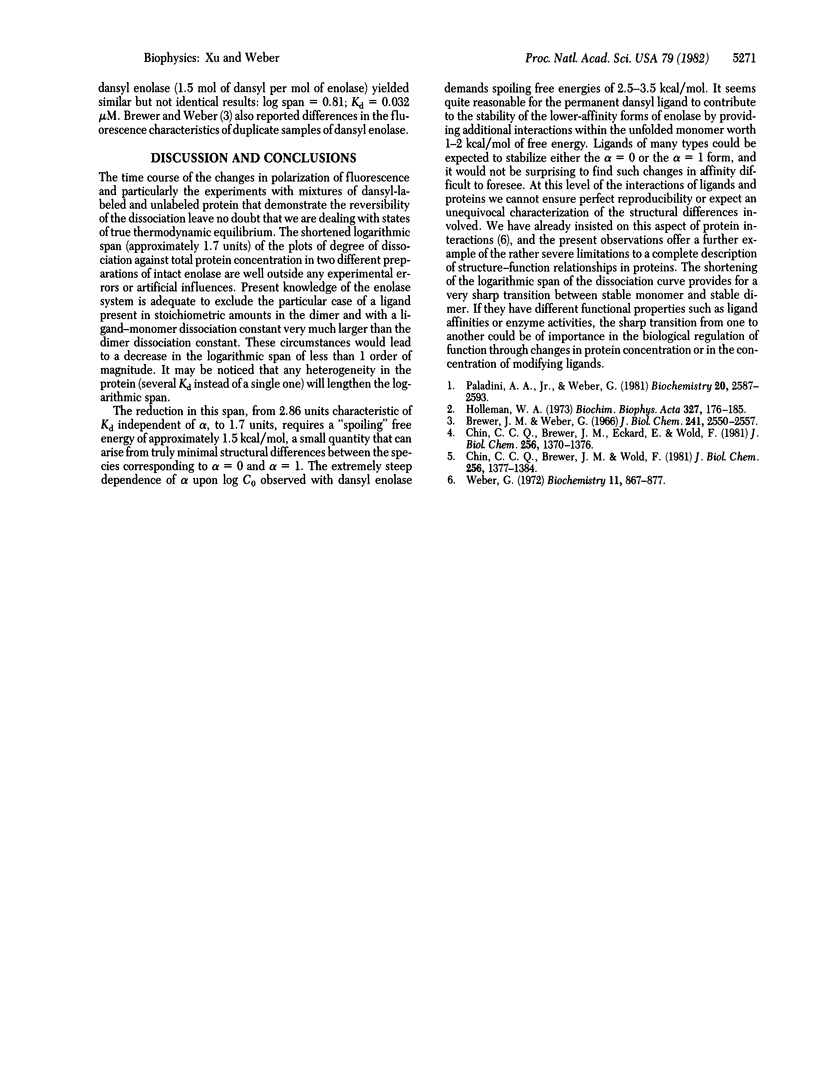Abstract
The chemical potential of a protein is a time-averaged quantity whose value depends upon the fractions of time spent in the different conformations and therefore upon the protein dynamics. If the monomer involved in an association equilibrium undergoes unfolding limited by its lifetime, its chemical potential as well as that of the associated form will not be constant and the free energy of association will be a diminishing function of the degree of dissociation. For a unique free energy of association, the logarithm of the protein concentration must change by 2.86 units to increase the degree of dissociation from 0.1 to 0.9. The dissociation of enolase appears to take place over a significantly smaller range (1.7 units), and dansyl conjugates of enolase show an even narrower range (0.9 unit). A simple descriptive theory is developed, and this shows that the values observed are explained by a difference in free energy of 1-3 kcal/mol (1 cal = 4.18 J) between the conformations present at negligible and almost complete dissociation.
Full text
PDF



Selected References
These references are in PubMed. This may not be the complete list of references from this article.
- Brewer J. M., Weber G. The effect of magnesium on some physical properties of yeast enolase. J Biol Chem. 1966 Jun 10;241(11):2550–2557. [PubMed] [Google Scholar]
- Chin C. C., Brewer J. M., Eckard E., Wold F. The amino acid sequence of yeast enolase. Preparation and characterization of peptides produced by chemical and enzymatic fragmentation. J Biol Chem. 1981 Feb 10;256(3):1370–1376. [PubMed] [Google Scholar]
- Chin C. C., Brewer J. M., Wold F. The amino acid sequence of yeast enolase. J Biol Chem. 1981 Feb 10;256(3):1377–1384. [PubMed] [Google Scholar]
- Holleman W. H. The use of absorption optics to measure dissociation of yeast enolase into enzymatically active monomers. Biochim Biophys Acta. 1973 Nov 15;327(1):176–185. doi: 10.1016/0005-2744(73)90115-0. [DOI] [PubMed] [Google Scholar]
- Paladini A. A., Jr, Weber G. Pressure-induced reversible dissociation of enolase. Biochemistry. 1981 Apr 28;20(9):2587–2593. doi: 10.1021/bi00512a034. [DOI] [PubMed] [Google Scholar]


